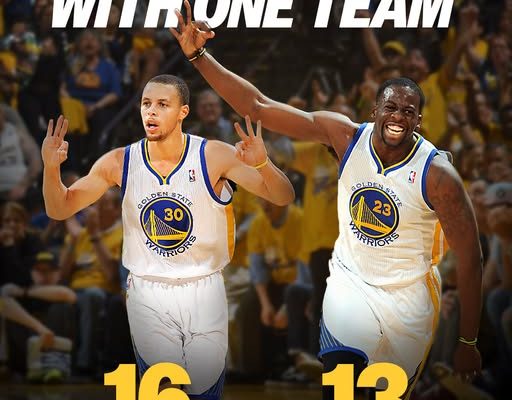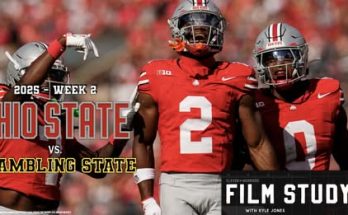Stephen Curry and Draymond Green have become synonymous with the Golden State Warriors, not just because of their remarkable skills and contributions on the court, but also because of their unparalleled loyalty to a single franchise. In an era where player movement is common and superstars frequently switch teams in search of championships or lucrative contracts, Curry and Green have stood out as steadfast pillars of continuity. Their tenure with the Warriors represents the longest active stretches in the NBA for players who have remained with a single team, a fact that speaks volumes about their commitment, the organization’s faith in them, and the stability they bring to a team constantly chasing greatness.
Curry’s journey with the Warriors began in 2009 when he was selected as the seventh overall pick in the NBA Draft. From the very start, it was clear that Curry possessed a rare combination of shooting prowess, basketball IQ, and competitive drive that could redefine the game. Over the years, he transformed not only his own career but the very style of basketball, popularizing the three-point shot as a central element of modern offense. The impact of his presence is reflected in the Warriors’ sustained success, including multiple NBA championships and record-setting regular seasons. Curry’s consistency and dedication to the franchise have made him not only a face of the Warriors but also one of the most recognizable athletes in the world. His loyalty is further underscored by the fact that he has signed contract extensions with the Warriors even when other franchises might have offered him larger short-term contracts, showing a commitment to team success and long-term legacy over individual gain.
Draymond Green, on the other hand, joined the Warriors in 2012 as the 35th overall pick, bringing with him a unique skill set that blends defensive versatility, playmaking ability, and leadership. Green’s value to the Warriors cannot be overstated. While Curry dazzles with his shooting and offensive creativity, Green serves as the team’s emotional engine, the defensive anchor, and a facilitator whose intelligence allows the Warriors’ offense to flow seamlessly. Green’s ability to guard multiple positions, anticipate plays, and create opportunities for his teammates has been a cornerstone of Golden State’s championship teams. The fact that Green has spent his entire NBA career with the Warriors adds a level of continuity and stability that is increasingly rare in professional sports. Together, Curry and Green exemplify the idea that a franchise can be built and sustained around core players who embrace the team’s culture and vision.
Their combined tenure with the Warriors has not only created historical success but has also fostered a unique culture within the organization. Stability in leadership and player personnel has allowed the Warriors to develop a system where players understand their roles, trust each other, and adapt to evolving challenges on the court. Curry and Green’s presence has encouraged other teammates, from Klay Thompson to Andrew Wiggins and Jordan Poole, to buy into the team’s identity. This long-standing continuity helps create a sense of family within the team, a factor that many argue is as important as talent when pursuing championships. The Warriors’ approach demonstrates that maintaining a core group of players over an extended period can yield results that short-term roster moves alone cannot achieve.
In addition to their contributions on the court, Curry and Green have also become influential figures off it. Both players have leveraged their platforms to engage with the community, promote social causes, and inspire younger generations of basketball players. Curry’s charitable initiatives and global recognition have made him a role model far beyond the boundaries of the NBA, while Green’s outspoken advocacy on social issues and leadership in community programs show the multidimensional impact of long-term franchise players. This connection with fans and the community reinforces their status not just as athletes but as ambassadors of the Golden State Warriors brand, further emphasizing the value of long-term loyalty in professional sports.
Another dimension of their long-standing tenure is the historical significance it carries in the context of the NBA. The modern league sees frequent player movement due to free agency, trades, and salary cap considerations, making it increasingly rare for players to remain with one team for an entire career. Curry and Green’s loyalty positions them in a category of players who not only achieve individual greatness but also contribute to a sustained legacy with one franchise. Their combined presence has allowed the Warriors to create a unique narrative, one that intertwines the careers of two of the game’s most influential players with the identity of a storied organization. This alignment of individual and team identity is increasingly rare and is a key reason why the Warriors’ success has been so notable.
The relationship between the players and the franchise is mutually reinforcing. The Warriors organization has shown unwavering support for Curry and Green through contract extensions, leadership roles, and the creation of an environment where their talents can flourish. In return, the players’ commitment has provided the team with a dependable foundation around which to build championship-caliber rosters. This mutual loyalty is a testament to the idea that the most successful sports franchises often rely not only on financial resources or talent acquisition but also on fostering deep-rooted relationships with core players. The Warriors’ ability to maintain Curry and Green as cornerstones illustrates how strategic alignment and trust between players and management can create a dynasty-like structure in professional sports.
As the NBA continues to evolve, the significance of Curry and Green’s tenure will only become more pronounced. Future generations of players may look to their careers as examples of what can be achieved through dedication to a single franchise, while organizations may use their example to emphasize the importance of stability and culture. Their impact will not only be measured by championships, statistical achievements, or accolades but also by the intangible sense of continuity and identity they have provided to the Warriors. Fans and analysts alike recognize that Curry and Green are more than just players; they are emblematic of an era in Golden State basketball that has changed the league in terms of style, strategy, and culture.



